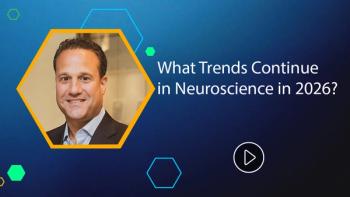
Supporting Successful Pharma Leadership with Neuroscience-Based Learning
To effectively lead in today’s unpredictable environment, several major pharma companies are turning to a neuroscience-based learning approach to leadership development.
Prior to 2020, the pharmaceutical industry already faced challenges – regulators had become more cautious, the demand for medicine had increased, productivity remained historically stagnant, and healthcare payer constraints had grown. When the pandemic hit, it brought with it an added layer of struggles. Overall industry volatility and complexity increased, leaders were confronted with unprecedented challenges in managing both employees and medical outputs, and a cloud of uncertainty descended upon the pharmaceutical arena.
As a result, the need to develop leadership to rally the charge into the “new normal” has become a top priority. Although the industry has been on the forefront of remote work and virtual learning for some time, the pandemic has exposed a particular gap — a lack of effective, prescriptive remote leadership development programs.
Creating successful programs for high-potential pharma leaders in the midst of chaotic times, however, takes an understanding of how stress impacts learning and how a methodical approach can help overcome roadblocks. This is where principles and practices related to neuroscience-based learning come into play. First, let’s understand why – and how – this approach is so relevant to today’s pharmaceutical workforce.
Why processing new learnings is harder amid chaos
Right now, the pharma industry is dealing with a great deal of unknowns. In a sector dedicated to science and certainty, this only serves to amplify the stress wrought by the global pandemic and unrest triggered by our current social and political environment. These stressors simply do not bode well for brainpower and cognitive function.
In such extended periods of chaos, the brain’s prefrontal cortex tends to shut down. This area of the brain is primarily responsible for higher-order thinking, meaning any decrease in function makes it harder to process data and thoughts, to strategize and to creatively problem-solve. That’s why it’s not uncommon these days to hear employees, coworkers and managers share sentiments like “I can’t think straight” or “Tasks I used to do relatively easily now take much more time and effort.”
Also, when the prefrontal cortex shuts down, the brain automatically switches to the amygdala and basal ganglia. These parts of the brain are responsible for regulating and processing our emotions, feelings, memories and motivation. As the human brain shifts from a logical to an emotional mode during times of stress, responses to situations become more emotive. Tempers may flare, tears may flow, and objectivity flies out the window — clouding objective decision-making and straining co-worker relations.
To effectively lead in today’s unpredictable environment, several major pharma companies are turning to a neuroscience-based learning approach to leadership development. Essentially this means that employees are being trained using principles designed to form new, long-lasting habits and optimize skills retention. Neuroscience involves techniques that slow the brain down and free up space in the prefrontal cortex so that emerging leaders can better assimilate and retain information, as well as apply their learnings to real-world situations. They gain a sharper sense of certainty, stability and clarity by using protocols that help them problem-solve and bring order to chaos. Neuroscience-based learning can easily be adapted to a virtual, self-paced training curriculum that not only helps to reinforce practical teachings, but also develop the “soft” skills essential for modern leadership success.
Soft skills are important to leadership success
Part of the reason many of those in pharmaceutical leadership positions are especially struggling right now is that training and development’s emphasis had traditionally focused on “hard” skills like performance, achieving sales quotas and the ability to measure results. But, it’s the “soft” skills, like how to give an employee quality feedback or how to lead with compassion, that are exponentially more important to overall leadership success.
Especially in these times of remote work and industry ambiguity where in-person interaction is at a minimum, it’s crucial that managers and leaders understand how to motivate people past data and numbers to form meaningful relationships. It’s about knowing how to focus on both people and performance, without forgoing one for the other. Learning via neuroscience-based approaches can help cultivate “soft” skills in existing and emerging pharmaceutical leaders, even when done in a virtual capacity.
Neuroscience-based learning: practice, reflect, refine
Neuroscience learning techniques focus on a practice, reflect, refine approach. Essentially this means that an employee wanting to be a manager should first focus on just one aspect that would help them get better at that role versus learning every aspect of the role all at once as part of a “one-size-fits-all” training regimen.
The best way to learn is to laser-focus on one thing that is meaningful, and then practice it over and over in as many different situations as possible until it becomes habit or second nature. Then, move on to the next aspect to focus on. In this respect, it harkens back to academia and how people best learn, where the way in which we are taught to retain information leverages a stepped, methodical approach. After all, in high school we didn’t go to a math class and get every single math equation we needed to learn for the entire school year on our first day. The goal is to simplify and put people in a learning state that lets the prefrontal cortex truly focus and make connections.
Four key success factors for remote training
When creating a virtual leadership training curriculum based on neuroscience, the program should provide clarity and incorporate a metrics component to enable the assessment of overall ROI. This is especially significant in the pharmaceutical business. But, most importantly, to maintain engagement and ensure success in leadership development, the program should provide a counterpoint to current chaotic events.
A talent development program based on a neuroscience-based application to leadership development should offset today’s rampant volatility, uncertainty, complexity and ambiguity in four key ways:
- Stability: It provides the solid foundation of a tested, proven approach that takes the guesswork out of development and drives learning under the most stressful of conditions.
- Predictability: It helps achieve a regular “rhythm” of individual development, with clear start-to- finish guidelines and defined weekly and daily expectations.
- Simplicity: It uses an easy-to-follow virtual learning protocol that employees can engage and disengage with based on convenience, and which requires a flexible time commitment that doesn’t interfere with core job responsibilities.
- Clarity: It provides specific, concise and measurable direction – e.g. instead of “try to be more concise in your emails,” you get “in the next week, try to keep your email replies to under two sentences.”
In the end, neuroscience protocols structure the process to make the most of the developmental experience. For pharmaceutical companies, this means helping leaders develop themselves and the people that report to them, while at the same time still fulfilling the other requirements of their role. After all, the “soft” skills referred to earlier are significant predictors of successful performance. This is especially important given leaders are now assessed on team performance versus individual performance, and that teams are now mostly separated by distance and geographic barriers.
What to look for in a leadership development solution
When looking to create, or invest in, a neuroscience-based training platform, pharmaceutical organizations should evaluate several factors that accommodate various leadership levels – from high potential middle management to emerging leaders.
First, seek a virtual tool that allows for variety in learning activities and can be accessed anytime from anywhere, enabling you to create self-paced, level-specific content and exercises to foster individualized learning experiences. Second, look for the ability to support active user engagement with measurable results, like progress assessments.
Third, find a platform that supports remote manager involvement and peer-to-peer interaction, as skills development and learning does not happen in a vacuum.
Beth Doladee, M.A., M.B.A. and Neelima Paranjpey, Ph.D., are Managing Consultants at
Newsletter
Lead with insight with the Pharmaceutical Executive newsletter, featuring strategic analysis, leadership trends, and market intelligence for biopharma decision-makers.





